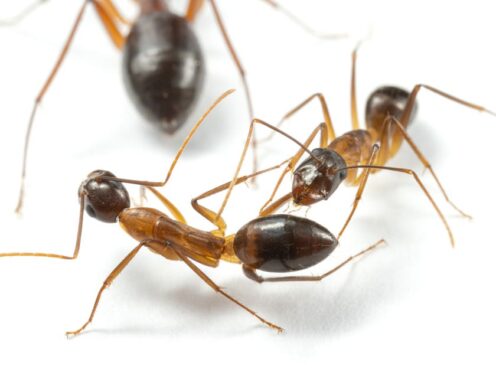
Ants bite off injured limbs of fellow ants in an emergency in order to ensure their survival, a study has found.
The Florida carpenter ants (Camponotus floridanus) amputate limbs as a precautionary measure to save the lives of wounded nestmates – a behaviour that was previously only known in humans.
Whether they take this radical step depends on the location of the wound, the findings suggest.
First author Erik Frank, a behavioural ecologist from the University of Wurzburg, Germany, said: “When we’re talking about amputation behaviour, this is literally the only case in which a sophisticated and systematic amputation of an individual by another member of its species occurs in the animal kingdom.”
He added: “When you look at the videos where you have the ant presenting the injured leg and letting the other one bite off completely voluntarily, and then present the newly made wound so another one can finish the cleaning process – this level of innate cooperation to me is quite striking.”
When testing the effectiveness of these treatments, not only did they help with recovery, but the research team found the ants’ choice of care catered to the type of injury they came across.
In the case of certain injuries to the legs, they bite them off completely.
This procedure prevents life-threatening infections from spreading through the ants’ bodies.
According to the findings, this practice has a very high success rate with around 90% of the amputated animals surviving the treatment.
Despite the loss of one of their six legs, the insects are then able to carry out their full range of tasks in the nest.
The researchers also found that the ants only carried out the amputation if the injuries were high on the thigh – regardless of whether the wounds were sterile or infected with bacteria.
But if the wound was on the lower leg, they did not amputate, and instead put more effort into caring from the injury through licking it intensively.
This therapy is also relatively successful, with a survival rate of around 75%.
The speed at which the ants can amputate a leg makes a difference, and an ant-assisted amputation takes at least 40 minutes to complete.
Experimental testing demonstrated that with lower leg injuries, if the leg was not immediately removed post-infection, the ant would not survive
“Thus, because they are unable to cut the leg sufficiently quickly to prevent the spread of harmful bacteria, ants try to limit the probability of lethal infection by spending more time cleaning the tibia wound,” said senior author and evolutionary biologist Laurent Keller of the University of Lausanne, Switzerland.
Dr Frank said: “The fact that the ants are able to diagnose a wound, see if it’s infected or sterile, and treat it accordingly over long periods of time by other individuals – the only medical system that can rival that would be the human one.”
Wound care among ants is not an entirely new phenomenon, and previous research discovered that a different group of ants, Megaponera analis, use a special gland to inoculate injuries with antimicrobial compounds meant to quell possible infections.
The experts say that what makes Florida carpenter ants, native to Florida in the US, stand out is that because they have no such gland, they appear to be using only mechanical means to treat their nestmates.
Now the lab team is running similar experiments in other Camponotus species to see just how conserved this behaviour is and begin to unpack whether all ant species without the special antimicrobial gland also perform amputation.
The findings are published in the journal Current Biology.

Enjoy the convenience of having The Sunday Post delivered as a digital ePaper straight to your smartphone, tablet or computer.
Subscribe for only £5.49 a month and enjoy all the benefits of the printed paper as a digital replica.
Subscribe